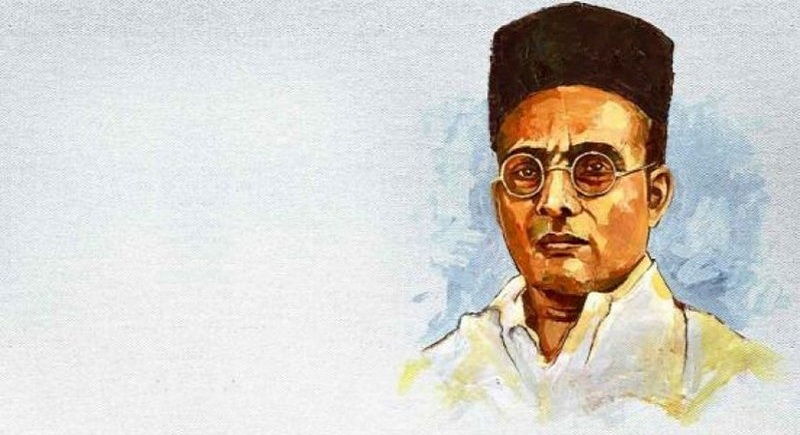Swarakar: Hero or Villain? Read before you decide…


In India, there are two main opinions about Savarkar. According to one opinion, Savarkar is a great revolutionary and freedom fighter of the country. Despite fundamental differences, his supporters consider him a freedom fighter on par with Mahatma Gandhi. The other opinion, on the other hand, sees Savarkar as a villain. It calls him a coward and an agent of the British. This has led to a constant atmosphere of controversy and debate in political and intellectual circles. So let us try to understand why there is so much controversy about Savarkar? Why is there opposition to giving a revolutionary his due respect?
First, let us know the opinion of Mahatma Gandhi on the matter for which Savarkar is most criticized. This issue is that of apologizing to the British. On this matter, Gandhiji had called Savarkar “clever”, saying that “he (Savarkar) had taken advantage of the situation and demanded clemency, which was also granted to most of the revolutionaries and political prisoners in the country during that time. Savarkar could not do what he could for the independence of the country by staying outside the jail, staying inside the jail.”
From this statement of Gandhiji, it is clear that Savarkar did not bow down to the British, but showed cleverness for the future battle. Well, let’s talk about all the aspects related to Savarkar which are necessary to know before forming an opinion on them.
Vinayak Damodar Savarkar was arrested in London in 1910 on charges of involvement in the murder of the collector of Nashik. He was being brought to India on a ship named SS Maurya. When the ship was about to reach the port of Marseille in France, Savarkar jumped into the sea from the “port hole” of the ship’s toilet. Security personnel fired at him during this time, but he escaped. However, after running half a kilometer from the seashore, he was arrested again.
The case of Savarkar’s rights over his arrest on French soil also reached the Hague International Court of Justice. At first, there was a lot of controversy between Britain and France over his arrest. But later, both countries signed a treaty. After that, the International Court of Justice ruled in favor of Britain. This incident was condemned all over the world. There were so many protests against it in France itself that the Prime Minister of France, Briand, had to resign.
After going through a long period of torture, Savarkar devised a strategy. He decided to apologize to the British. For this, he wrote six letters to the British government. According to the law, prisoners are released on certain conditions considering their good behavior. Many political prisoners benefited from this during that time. Considering all of Savarkar’s good behavior, he was released in 1924. But two conditions were imposed on him. First, he would not participate in any political activity. Second, he would not leave the district without the permission of the district collector of Ratnagiri.
On this matter, Ram Bahadur Rai, the head of Indira Gandhi Centre of Arts, says that Savarkar always tried to work as much as he could by staying underground. According to him, Savarkar did not get involved in the hassle of what people would say about his apology. His thinking was that if he remained outside the jail, he would be able to do whatever he wanted.
The image of Savarkar was severely damaged when he was arrested in 1948 on charges of assassinating Mahatma Gandhi. He was arrested only because Nathuram Godse shared many similarities in his views and Godse was also previously associated with the Hindu Mahasabha. However, in 1949, the charge of Savarkar’s involvement in Gandhi’s assassination was proved to be baseless and he was acquitted with honor.
Despite being acquitted by the court, the mere charge of his involvement in Gandhi’s assassination made him the biggest villain in independent India after Godse. He died in 1966 after living a very lonely life after independence. After this, Savarkar’s legacy was overshadowed.
But then a time came when the process of giving him his due respect began in the government of Atal Bihari Vajpayee. In view of this, his picture was put up in Parliament despite the opposition of the Congress and Left parties. But see the coincidence, in the Central Hall of Parliament, the pictures of Gandhi and Savarkar are also hanging on the wall opposite each other. And when you reach to pay respect to Savarkar, by coincidence, your back turns towards Gandhiji.
A similar equation has been created in the case of both great freedom fighters. For example, if you pay respect to Savarkar, you have to turn your back on Gandhi’s ideology. If you accept Gandhi, you have to deny Savarkar’s ideology.
DISCLAIMER: The author is solely responsible for the views expressed in this article. The author carries the responsibility for citing and/or licensing of images utilized within the text.
